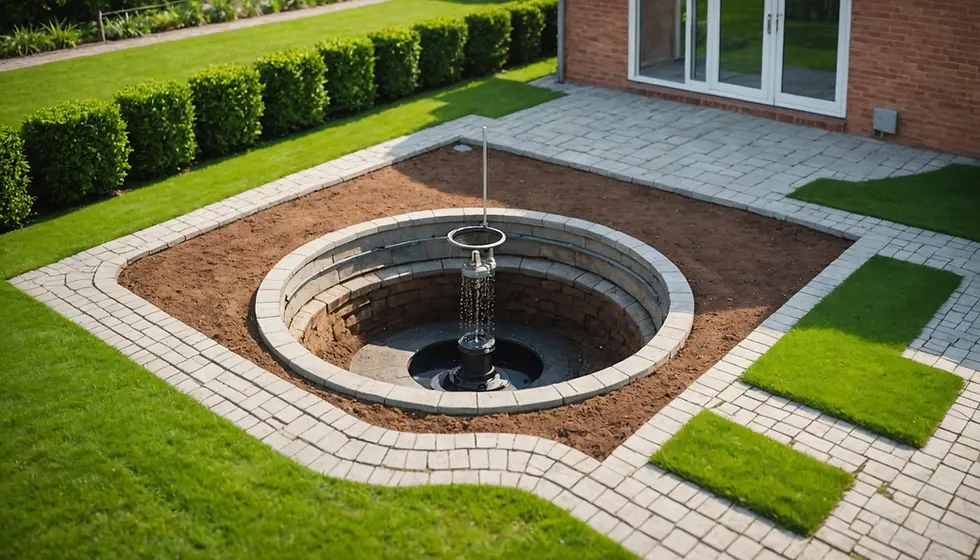Are You Watering Your Fresh Sod the Right Way? A Step-By-Step Guide for Arkansas Homeowners
- Garrett Williams
- Jan 15
- 3 min read
Installing fresh sod in your yard can dramatically change your outdoor space into a beautiful and inviting landscape. But the journey to a lush lawn doesn't end with the installation; proper watering techniques are essential for ensuring your sod establishes itself successfully. This guide will provide you with best practices for watering your new sod, allowing you to achieve a stunning lawn with minimal hassle.
Understanding the Importance of Proper Watering
When you invest time and money into sod installation, ensuring it's well-hydrated is vital. Fresh sod needs the right amount of water to take root and adapt. In Arkansas, where summers can reach temperatures over 90°F and rainfall varies significantly, understanding your watering needs is crucial.
Proper watering helps the roots establish quickly, reducing the chances of disease and promoting a stronger lawn. By following the steps below, you can optimize your watering routine for the best results.
Initial Watering Right After Installation
Water Immediately
Right after your sod is installed, watering it immediately is critical. This first watering should soak the soil sufficiently to ensure the roots make contact.
Tip: Aim to water at least 1 inch deep. This helps jumpstart the establishment process.
Assessing Soil Moisture
After your initial watering, check the moisture level daily. Lift a corner of the sod; if it feels dry or pulls away from the soil, it’s time to water again.
Tip: Use a soil probe or screwdriver to gauge how deep the moisture reaches. Your goal is to keep the top 6-12 inches of soil moist.
Setting Up Your Watering Schedule
Daily Watering for the First Two Weeks
In the first two weeks after installation, water your fresh sod every day. The goal is to keep both the sod and the soil below consistently moist.
Tip: Water in the early morning. This allows evaporation during warmer hours while giving the sod a chance to dry overnight. Moist conditions in the evening can lead to fungal diseases.
Watering Adjustments After Two Weeks
After two weeks, adjust your schedule. Water less often but for longer periods to encourage deeper root growth.
Tip: Start watering every other day for two more weeks, then switch to twice a week. This method promotes robust root systems, which can reach deeper into the soil for nutrients and moisture.
Understanding Local Climate Factors
Weather Considerations
In Arkansas, understanding local weather is key to your watering routine. Heavy rains can saturate the soil, while dry spells may require additional watering. In fact, the average rainfall in Arkansas is about 50-60 inches per year, but this varies by region.
Tip: Keep an eye on the forecast and adjust your watering based on expected precipitation. Your sod may still need hydration even during cooler periods.
Morning vs. Evening Watering
Timing your watering can make a difference. Morning watering is generally the best option since it allows for grass to dry out, minimizing the risk of disease.
Tip: If evening watering is necessary, do it early enough to allow the grass to dry overnight.
Techniques for Effective Watering
Use of Sprinklers vs. Soakers
Consider your watering equipment carefully. While traditional sprinklers can cover a large area, soaker hoses deliver water slowly and directly to the soil. This can be more effective for deep watering.
Tip: If you use a sprinkler, ensure it provides even coverage. Uneven watering can lead to patches of dead sod, impacting the overall quality.
Avoiding Overwatering
Monitoring your sod is essential to prevent overwatering, which can suffocate roots and lead to diseases.
Tip: If you notice puddles forming on the surface, reduce your watering schedule and duration.
Caring for Your New Lawn
Signs of Healthy Grass
Assessing your sod’s health is crucial. Healthy grass should display vibrant green colors and a plush texture. If the grass appears brown or limp, it may indicate issues with your watering approach.
Tip: Regularly inspect your lawn. Look for resilience as a key indicator of effective watering.
Fertilizing and Maintenance
Fertilization is also essential for establishing your new sod on the right path. Applying a quality fertilizer enriches the soil and provides necessary nutrients for good growth.
Tip: Consider applying a starter fertilizer about four to six weeks after installation to further enhance your sod’s growth alongside watering routines.
Nurturing Your New Lawn for the Long Haul
Fresh sod installation is only the beginning of your lawn journey. By following the watering techniques outlined in this guide, you can ensure that your new sod flourishes even in Arkansas's challenging climate.
Consistency in your watering practices, keeping track of weather conditions, and regularly assessing your lawn’s health will lead to a vibrant, green space you can enjoy for years. Remember, taking care of your lawn now means a better outdoor experience and less work in the future.
With the right methods in place, you'll be well on your way to having the best sod in your neighborhood. Enjoy your beautiful new lawn!





Comments